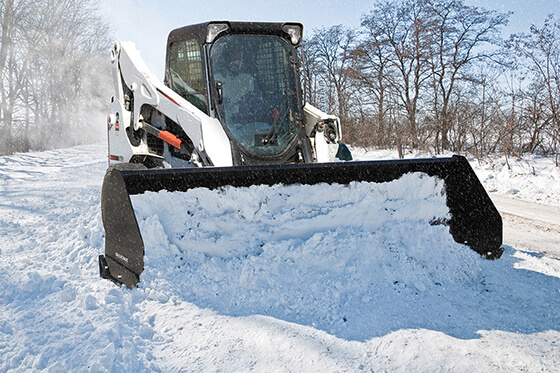Here’s how to keep your equipment running in extreme cold.
Manitoba winters bring their own set of challenges with hydraulic tools and attachments. Keep your winter projects on track with these helpful tips for cold weather operation of hydraulic equipment:
- Before attempting to start the engine, make sure that the oil in the engine, the oil in the transmission, and the oil in the hydraulic system are fluid enough to flow. Check the oil by removing the dipsticks. If the oil will drip from the dipstick, then the oil is fluid enough to start the engine. Do not use oil that has been diluted with kerosene. This will cause the oil to thicken.
- Time to warm up. Like your muscles, hydraulic equipment need time to “warm up”. Be sure you warm the hydraulic system of the carrier before operating any attachment. Generally, the oil in the carrier needs to be warm to the touch to indicate adequate heat in the hydraulic system. Running equipment cold can result in damage to the plastic and rubber components. A good methodology to follow is with the warmed up engine at half throttle, activate the attachment for 15 seconds, wait five seconds, then repeat two or three times, before operating the equipment in an actual work setting.
- Extreme temperatures play havoc with rubber components. Inspect components for cracks and tears before operating, warm up sufficiently, and have spare seals, rubber mounts, hoses and fittings on hand to minimize downtime due to extreme cold.
Cold-weather specific attachments – there are many winter-specific tools available to do the job in deep cold, contact us for details.

